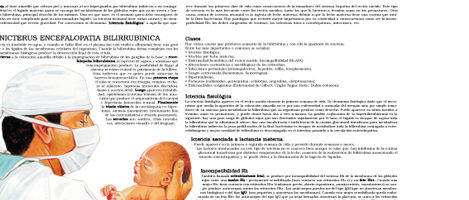
Jaundice is the yellowing taken by the skin and mucosas when stained by indirectreacting, or unconjugated bilirubin. During intrauterine life, it is the liver of the moth-er that is in charge of metabolizing both the red blood cells which are no longer useful, and the bilirubin, which consists in red blood cell debris. Once a baby has beenborn, their own liver is to be in charge of performing this function, which is high-ly complicated for an immature liver. Jaundice of the newborn may result from anumber of causes, but it does not necessarily imply a severe disease.Conventionally, “physiologic jaundice” is the type showing during the first days of life becau-se the hepatic system of newborns is still immature. This is the most frequent type of jaun-dice among newborns, no matter whether they were born in due time or whether they werepremature. Jaundice of the newborn is also commonly caused by breast milk, since breastmilk has an enzyme that inhibits bacterial flora. Therer are pathologies which are more significant because they are chronic, or because of their consequences (e.g. Rh incompatibility,congenital enzyme deficit, intra or extrahepatic cholestasis, infections etc.).




